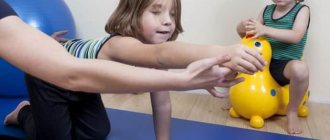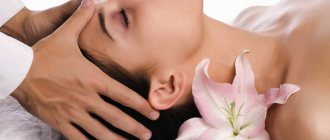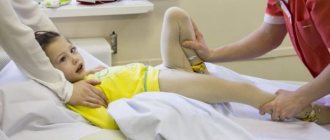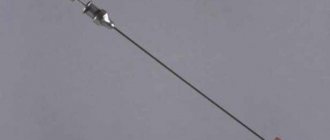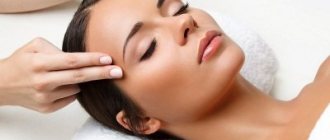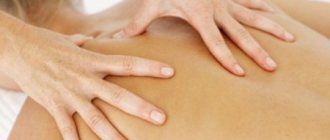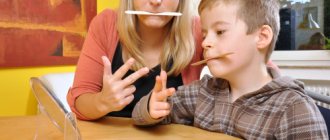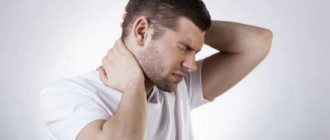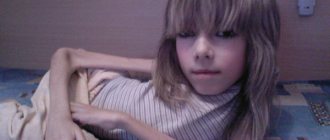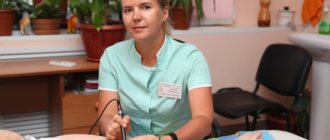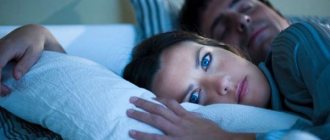- home
- Correction
Stuttering in children is not the most common speech defect, but it is quite difficult to treat. The goal of therapy is to relax the articulatory muscles and activate the brain centers responsible for speaking. Acupressure can effectively cope with this. It has no age restrictions, so it is prescribed according to indications for young and adult patients. We’ll tell you in more detail how to perform acupressure massage for stuttering.
What is stuttering
Logoneurosis, or stuttering, is a speech defect associated with a violation of the smoothness and rhythm of articulation, repeated repetition of syllables and sounds at the time of speaking. If the disease is not treated, the child may develop a complex and logophobia, that is, a fear of verbal communication.
According to speech therapists, kinesiologists, neurologists and psychiatrists, the causes of stuttering are pathologies of the central nervous system, features of the formation of speech skills, heredity and stress.
Children with logoneurosis experience the following symptoms of pathology:
- Increased irritability, excitability
- Shyness in speech
- Muscle spasms of the articulatory apparatus
- Disturbances in breathing rhythm
- Low pitch and strength of voice
- Slow accumulation of active vocabulary
- ZRR, ONR
- Tiki
- Labile emotional background
According to statistics, children who stutter are more likely to suffer from colds and lag behind their peers in mental and physical development. Speech disorders of this type need to be treated as early as possible. Therapy is not concentrated in one direction: according to indications, the help of a neurologist, psychologist, pediatrician, or psychiatrist is required. Medication and conservative treatment methods are used. One of the most effective procedures is acupressure. Correction of articulatory skills continues for a long time (from 6 months to 2-3 years), but helps to cope with even advanced cases of stuttering.
Treatment of stuttering in children with massage
Often, treatment of logoneurosis is combined with restorative procedures. Massage for stuttering in children is highly effective. It is performed by a professional or parents at home. To do this, they must undergo special training courses. Areas of influence are the face, neck and upper shoulder girdle.
Goals of speech therapy massage
The specialist must be well versed in the structure of facial and articulatory muscles, neck muscles and the location of the nerves of the brain center. Tactile influence on certain areas during stuttering has the following goals:
- relieving tension from the muscles of the larynx, tongue and pharynx;
- normalization of blood supply to the speech apparatus;
- decreased salivation, which interferes with the correct pronunciation of words;
- stimulation of the area of the central nervous system responsible for speech;
- regulation of the child’s psychological state.
After a course of massage, the muscles of the root of the tongue relax. This helps in the treatment of logoneurosis. The procedure has no contraindications, so it is suitable even for children. Positive dynamics are observed after the first course, but it is worth considering the degree of development of the pathology. An advanced disease will require more time to correct.
Rules for performing massage
The procedure in many cases precedes a speech therapy session. Before performing it, the specialist puts the child in a positive mood in order to calm him down. Then the baby will be able to take a relaxing pose. It should be taken into account that musical accompaniment contributes to emotional liberation. The room in which manipulations are performed must meet the following requirements:
- comfortable;
- well ventilated;
- cleaned;
- not cool.
The speech therapist begins the procedure with clean and warm hands. An important condition is that they are free of damage, various jewelry, and fingernails, otherwise the child may be injured. The massage is performed slowly. Manipulations are not performed on an empty stomach or immediately after eating. The baby should not drink strong tea or coffee. If he is too excited, the session is skipped.
Execution technique
Use your fingertips to apply pressure to the point. They do it slowly and weakly. After this, apply circular movements (clockwise) to the desired area for 30 s. The pressure is gradually increased, then weakened, and then renewed again. Do not apply sharp pressure or push.
When massaging areas near the mouth, the child should open it slightly. If the points located on the larynx are affected, the baby is recommended to pronounce a vowel sound. If dizziness occurs, manipulations should be stopped.
Efficiency
Acupressure massage for stuttering in adults and children is prescribed after examining the general somatic health, central nervous system, mental and psychological state of the patient. If there are no contraindications, the patient undergoes 1 or 2-3 courses of procedures.
The effectiveness of acupressure for stuttering in children is as follows:
- The muscles that regulate breathing, articulation, and vocal cords relax.
- The child's immunity is strengthened.
- The patient’s mental and emotional state is normalized.
- Improves blood circulation.
- Metabolism increases.
- Stuttering is minimized or eliminated completely.
Segmental massage
The purpose of this type of massage is to influence the muscle responsible for the process of speech in humans. The course of treatment lasts 2–3 weeks (depending on the specific case), sessions are held daily, starting from 5 minutes. classes, the duration is gradually increased to 20 minutes. Segmental massage is also considered a fairly effective method of treating speech therapy problems. In the chronic form of the disease, courses of treatment are repeated during exacerbations.
Algorithm
The specialist must help the patient relax - this is very important for the success of the case. The position he takes should be comfortable, conducive to maximum relaxation. The following positions are recommended: lying on your back, legs straightened and arms extended along the body, half-sitting, in a chair with a high back. The performer is positioned behind the patient's head.
Segmental massage techniques are an important component of the effectiveness of the procedure.
- stroking before the start of the process, during it and at the end to relax the area;
- rubbing activates blood circulation, normalizes metabolic processes;
- kneading enhances muscle processes;
- pressing improves metabolism;
- vibrations/tingling regulate muscle tone.
Technique
Acupressure for stuttering does not have to be done in a clinic or hired by a specialist. You can undergo treatment at home. This does not require special skills or knowledge. It is enough to have an idea about acupuncture, to be attentive to the child’s condition while kneading points on the body and to obtain permission for independent therapy from a pediatrician or neurologist. A ban on self-medication is imposed if children have a history of numerous concomitant pathologies, muscle tension is very strong and it is impossible to cope with it without the help of a specialist.
Before you begin massage therapy at home, find the right points on your child's body. Study the educational pictures and diagrams of their location, try to feel them in an adult and a small patient. Gently press on the points. If the child feels a slight ache or a slight aching pain when touched, then the point has been found correctly. Remember where it is located, you can make marks with iodine or brilliant green. After searching for all the points, you can begin treatment at home.
Bioactive pressure points for acupressure for stuttering
By influencing bioactive points during stuttering, it is possible to normalize the psycho-emotional state of a stutterer, relax the muscles responsible for the activity of the vocal, articulatory and respiratory apparatus, and generally strengthen the protective functions of the body.
Let's consider bioactive points of influence:
- Point 1 (da-lin) - located on the inside of the arm, in the wrist area in the middle of the tendons. Has a symmetrical point. Take a sitting position and place your hand on a hard surface, palm up, and massage the area alternately on the right and left.
- Point 2 (Nei Guan) – located on the front of the forearm, 2 cun above the midline of the wrist, in the middle of the tendons. Symmetrical. Stimulate in the same position as point 1. (1 cun is a Chinese inch equal to 3.73 cm.)
- Point 3 (tian jing) is a point concentrated on the back shoulder plane, 1 cun above the level of the elbow straight arm. Sit down and lower your hand, influence the zone first on the right, then on the left.
- Point 4 (zu-san-li) – is located in the lower leg region, 3 cun below the level of the kneecap and 1 cun to the side from the front side of the tibia. Has a symmetrical point. In a sitting position, stretch your legs and massage the areas together on both sides.
- Point 5 (xin-shu) is a symmetrical point, concentrated in the back area, 1.5 cun from the posterior median vertical at the level of the space between the spinous processes of the fifth and sixth thoracic vertebrae. While sitting, lean forward slightly (or take a position lying on your stomach) and stimulate the points on the left and right at the same time. Movements must be carried out with the help of another person.
- Point 6 (he-liao) - located in the face, in the fossa above the zygomatic arch at the beginning of the auricle. Symmetrical. While sitting, rest your elbows on a hard surface and massage the points together on both sides.
- Point 7 (san-yin-jiao) – a point in the shin area 3 cun above the medial malleolus, has symmetry. Massage points on both sides simultaneously in a sitting position.
- Point 8 (le-que) - concentrated in the forearm area, in the notch of the styloid process of the radius, 1.5 cun above the midline of the wrist. Has symmetry. Place your hand on the table and massage the points, alternating right and left.
- Point 9 (ya-men) is a point that does not have symmetry and is located in the scalp, on the back plane of the median horizontal. While sitting, tilt your head slightly and stimulate the bioactive zone with rotational movements.
- Point 10 (hou-shi) is a symmetrical point in the area of the hand on the line of connection between the back and palm, above the head of the fifth metacarpal bone. Sit down and put your hand on the table, palm down, clasp your fingers into a fist. Work by alternating points and pressing deeply on them for about 30-60 seconds.
All movements must be carried out with the fingertips strictly clockwise . Press on the acupuncture point smoothly and slowly for 30 seconds, gradually increasing the pressure. Next, you need to loosen the pressure without removing your finger, and press harder again. Resume movement 3-4 times for 4-5 minutes.
Attention! When doing acupressure for stuttering, to detect bioactive zones, you need to feel the intended place with your fingertip and apply pressure. Acupuncture is found when a feeling of aching occurs. During the massage, no pain or specific aches should arise.
Shiatsu acupressure massage is an optimal addition to basic treatment for stuttering prescribed by a specialist. To achieve a positive result, it is recommended to avoid psychological trauma that can aggravate the disease, and at the same time work diligently with a speech therapist.
Logomassage for stuttering for children and adults
Experts identify a number of severe speech disorders. To overcome them, comprehensive help will be required. Stuttering is characterized by a convulsive state of the muscles. Getting rid of such a defect is not easy.
In speech therapy work with people who stutter, various types of massage are used. It allows you to stimulate muscle function, relax them, and improve blood circulation. The differential approach was introduced recently, so this technique is not widely used.
general information
The main purpose of massage for stuttering is a mechanical effect on the condition of muscles, nerves, and blood vessels. Conducted by a speech therapist, probes are used if necessary.
Logomassage is part of complex therapy. In other words, it cannot be a panacea, but it can improve the child’s condition.
Children begin to stutter for various reasons. Scientists believe that it’s all about a combination of genetic and neurological factors. A predisposing factor is muscle hypertonicity. In adults, the disease appears after concussion, head injury, or stroke.
Massage can be used both in a special institution and at home. But before using it, doctors check the patient. The procedure has contraindications. The exposure is carried out in courses with a short break between them.
Massage helps to relax the muscles - articulation muscles that regulate the breathing process. The child’s mental state normalizes. Metabolism increases and blood circulation improves. Against this background, there is a decrease in the manifestations of stuttering.
Types of massage
The classification and sets of exercises were developed by Dyakova. She identified the following types of massage:
- point;
- probe;
- segmental.
Each requires the use of certain techniques. They affect the area of the neck, shoulders, and head. The specialist must have a good understanding of human anatomy and physiology and know the location of the cranial nerves.
For stuttering, acupressure and segmental massage are most often used. Sometimes a combination of them is effective.
For probe massage, special instruments are used - probes. They allow you to relieve hypertension or activate muscles.
The method of influence should not be perceived as a panacea. This is only additional help in case of a defect, but if you use only it alone, there will be no result.
Indications and contraindications
Speech therapy massage for stuttering is prescribed for any problems with muscle tone. During convulsions, they may become excessively compressed, tense, and it will be difficult for the child to return them to normal.
Relaxation plays an important role in the correction of stuttering. It is not easy to teach a patient to relax. Massage has this effect. If it is manual, it brings additional pleasant sensations.
Before the course, the speech therapist conducts diagnostics. He looks at the condition of articulatory and facial muscles. Checks the condition of the neck and shoulders. Draws attention to:
- asymmetry;
- skin rashes;
- skin color;
- hemorrhages.
After which palpation is carried out, that is, palpation. The speech therapist touches areas of the body with his fingers - this allows you to better feel the condition of the muscles. A similar examination is carried out in adults.
An absolute contraindication is epilepsy. Additional exposure may trigger seizures. Temporary relief is somatic diseases, injuries, inflammations.
Requirements for conducting
Before starting to relax the patient, the specialist must prepare the room. The office is washed, ventilated, and made cozy. The child should not create associations with the medical institution, as this will cause a negative reaction.
On average, procedures are carried out every other day. The usual course duration is 20 procedures. After which they take a break for a month, and the cycle is repeated again.
In childhood, they begin with short sessions of five minutes, gradually increasing the duration to half an hour. In adults, the same scheme is used. The child should not experience pain. Some effects may be unpleasant, but not cause acute discomfort.
It is advisable for the speech therapist to wear a sterile mask. The specialist’s hands should be clean, warm, with short-cut nails. Before starting, lightly lubricate the skin with oil or powder.
The optimal position is for a stuttering child to lie with his back on a flat couch. This position is convenient for the speech therapist and frees breathing. In some cases, a half-sitting position in a chair is allowed, with the child’s head thrown back on the headrest.
Sometimes it is convenient for a specialist to stand not behind the patient’s head, but on the right side of him. In this position it is easier for him to secure the child.
Basic Techniques
Each session begins with stroking. It is alternated with other techniques, but it is always completed with this technique. It can be superficial - the brush lightly touches the skin, gently and affectionately, with a deep grasping movement it affects the skin receptors and the nervous system. The palm is pressed firmly against the area and glides along the anatomical contours.
Stroking the “rake” - the fingers are spread wide, the pads actively massage the area of pressure. Performed in a circle, zigzag, wavy.
Rubbing involves applying strong pressure to a small area of muscle. It is performed both with the fingertips and the entire palm. The degree of impact is determined individually. Directions are spiral and straight.
Kneading - the fabric is gently rubbed, squeezed, compressed. Used in a small area. Perform with fingertips; in rare cases, pinching is allowed.
Vibration is created by lightly tapping your fingers on the surface of the muscles. Used in areas with minimal fat and where cranial nerves exit. Firm pressure allows you to target biologically active points (BAP).
The help from speech therapy massage will only be felt if the sessions are regular and the specialist is highly qualified. The choice of techniques depends on muscle tone and pathological features.
Self-massage
A specialist can teach children self-massage skills. This doesn't require much effort. Preschoolers are taught in front of a mirror, shown an example of an action and asked to repeat:
- The first exercise is to gently stroke your cheeks with your palms, working from your nose to your ears. You can stroke the head, going lower from the hair.
- The second exercise is to run your fingers with pressure from the middle of the forehead to the temples, as if drawing paths. You can draw a “Christmas tree”.
- The third exercise is tapping the forehead and cheeks with pads. There may be more exercises. The complex is compiled by a speech therapist based on the individual characteristics of the child.
Krupenchuk has her own method. She improved the Dyakova complex. Regular spoons are used for massage - this is perceived more positively by the child.
The process can be combined with games. In this case, it will be more interesting for children to complete the tasks of the speech therapist. As an incentive, you can give a sticker or the opportunity to choose a game.
Source: https://LogopediaCentr.ru/logopediya/logodedicheskij-massazh-pri-zaikanii/

